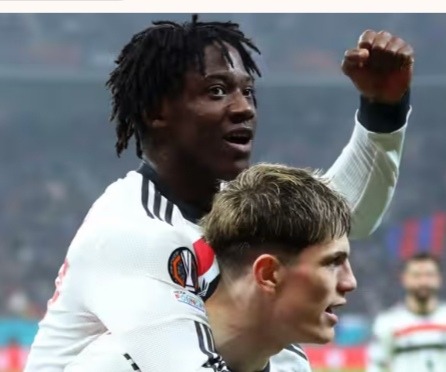Manchester United's Financial Woes Under Ratcliffe
Manchester United is facing severe financial struggles, with £313 million in losses and £410 million in transfer fees. Under Sir Jim Ratcliffe, the club is shifting to an austerity mode, risking its youth development legacy while exploring a controversial academy-to-profit model.
2/1/20252 min read


⚽ Manchester United’s “Austerity Era”: Is the Club Becoming a Talent Factory?
Manchester United’s financial woes are forcing them into austerity mode, with even their brightest young talents now up for sale. Under Sir Jim Ratcliffe, United is starting to resemble Chelsea’s controversial academy-to-profit model—a strategy that may bring in short-term cash but risks severing the club’s deep-rooted connection to its youth development legacy.
🔴 Financial Struggles: How Bad Is It?
United’s £313m losses over three years and £410m in outstanding transfer fees mean they are on the brink of breaching Profit and Sustainability Rules (PSR).
📉 Cost-Cutting Measures Include:
❌ No free match programs—fans must scan a QR code for manager updates
❌ Matchday stewards lost free cereal bars at the start of the season
❌ £100 Christmas staff bonuses replaced by £40 M&S vouchers
❌ Concession tickets for kids and seniors temporarily scrapped
Yet, despite these austerity measures, United still spent massively on:
💰 £21.4m to sack Erik ten Hag and bring in Ruben Amorim
💰 £100m package for Matthijs de Ligt, who has struggled so far
💰 Hiring Dan Ashworth for just five months
🔄 Transfer Market Dilemma: Selling Stars to Survive?
United needs at least six key signings to rebuild but must sell players to fund transfers.
🛑 Players They Want to Sell:
✔️ Victor Lindelöf
✔️ Tyrell Malacia
✔️ Harry Maguire
✔️ Christian Eriksen
✔️ Casemiro
✔️ Antony
💰 Players They Might Sell Against Their Will:
🚨 Alejandro Garnacho – Chelsea is reportedly interested in a £50m-£60m move before the deadline.
🚨 Kobbie Mainoo – Though he looks set to stay, he now knows he’s not untouchable.
🏟️ United Copying Chelsea’s Academy Model?
🔑 Under PSR rules, selling academy products counts as “pure profit”, making them valuable financial assets rather than footballing priorities.
United’s approach now mirrors Chelsea’s, where academy stars are developed, then sold to fund new signings. Over the years, Chelsea has let go of Conor Gallagher, Mason Mount, Ruben Loftus-Cheek, Callum Hudson-Odoi, Ian Maatsen, Lewis Hall, and Billy Gilmour—players who once formed the core of their squad.
Under Thomas Tuchel (2020-21), 25% of Chelsea’s league minutes were given to academy graduates.
Now, under Mauricio Pochettino (2024-25), it’s just 12%, mostly from Levi Colwill.
📢 This strategy has caused fan unrest at Chelsea, as many local supporters feel it erodes the club’s identity. However, international fans—less tied to the club’s history—often prioritize on-field success over youth development.
❌ What Does This Mean for United’s Future?
Manchester United has always prided itself on nurturing homegrown talent, with over 4,000 consecutive games featuring an academy graduate. But with financial pressures mounting, could United’s youth system become a cash machine rather than a pathway to first-team glory?
💬 What do you think? Should United keep faith in their young stars or embrace the Chelsea model to stay competitive? Drop your thoughts below! ⬇️
